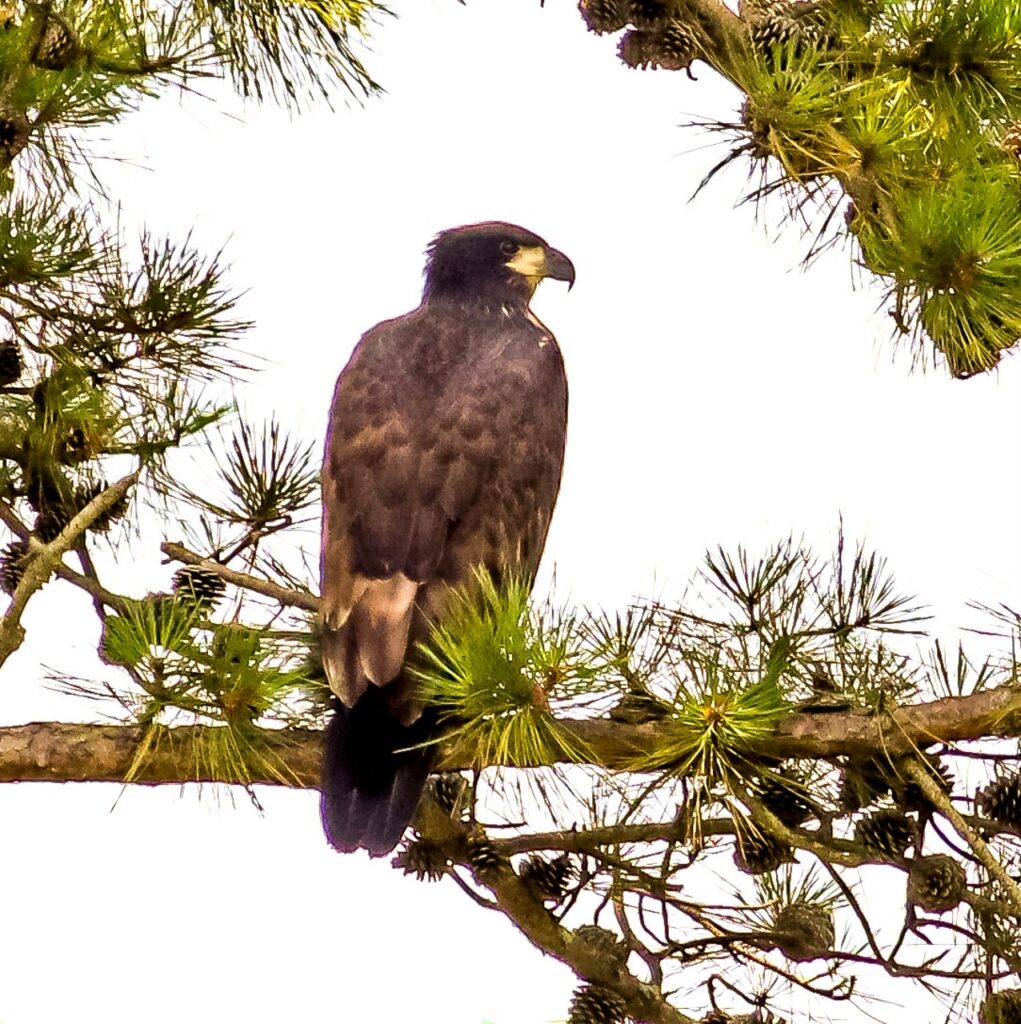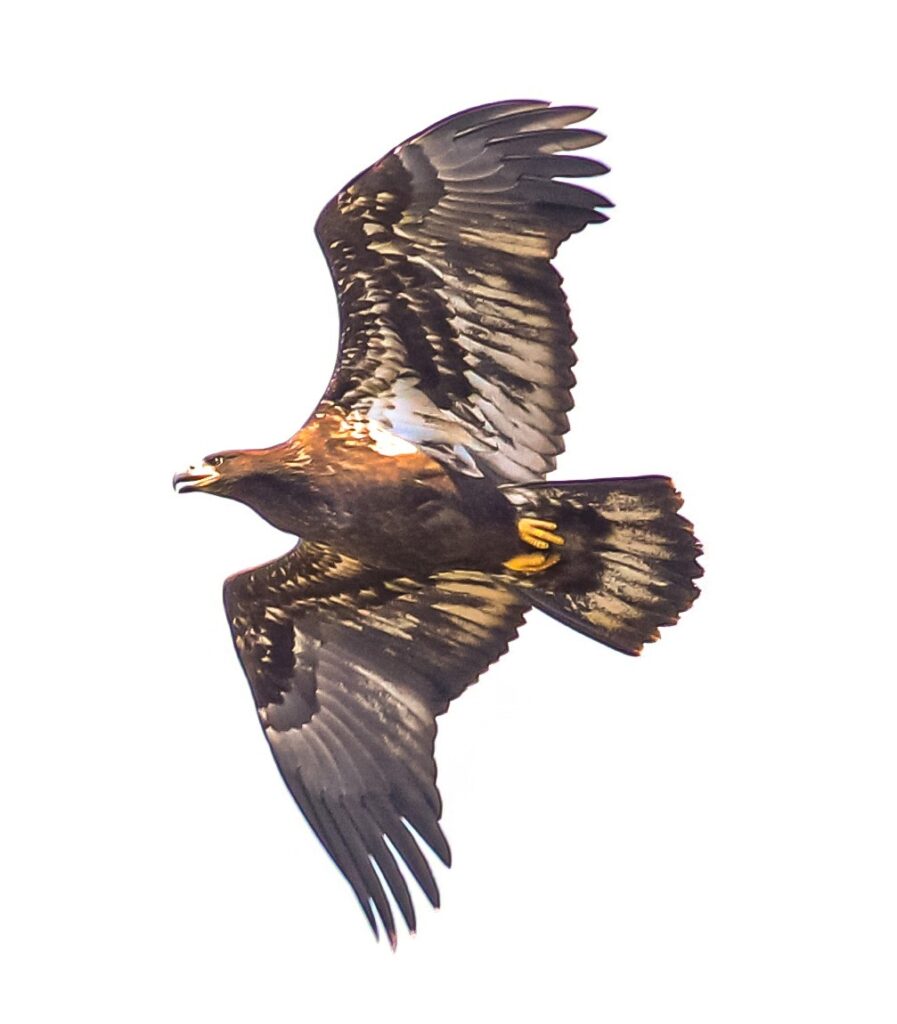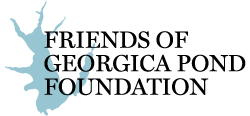What species of bird…
- Eats roadkill,
- Steals nests from other birds,
- Falls out of its nest,
- Kills its own kind?
Our national symbol, the bald eagle, that’s what. It’s no wonder Ben Franklin called it, “A bird of bad moral character.”
Our national symbol, the bald eagle (Haliaeetus leucocephalus) has landed at Georgica Pond. Last year a pair of eagles built a nest near the shore of the pond and successfully raised one chick. This is exciting news in that eagles had not nested on Long Island since the 1930s; but in the last decade, a few pairs started nesting on Gardiners Island and at The Nature Conservancy’s Mashomack Preserve on Shelter Island. It is likely that their offspring are colonizing nearby areas, including Georgica Pond.
Knocked out by DDT, other pesticides and habitat loss, the bald eagle disappeared from much of its original range. Thanks to extensive recovery efforts and the banning of DDT, the bald eagle has come back. It has been removed from the federal endangered species list but is still listed as threatened by New York State. It is illegal to disturb an eagle or its nest which are protected by state and federal laws.

They mate for life
According to the New York State DEC, eagles are long-lived birds with a life span of more than 30 years. They mate for life and return to the same nest every year. They defend their territory vigorously. The young birds also return and nest within 250 miles of their natal nest. We anticipate that the original Georgica pair will become highly valued residents of Georgica Pond.
Their favorite nest trees on Long Island include oaks and pitch pine. They generally nest in living trees and homeowners are encouraged to protect large pitch pine and oak trees near the pond. This hasn’t been easy lately with the invasion of the pine bark beetle which has killed thousands of pitch pine in East Hampton. Some pairs have taken over osprey nests.
What do they eat?
Bald eagles feed mainly on dead fish although they will also feed on waterfowl, seabirds, and small mammals. They have also been known to eat roadkill which can attract them to major roads and train tracks resulting in fatal collisions with vehicles. Ouch!
Where to see them
Many people have had the pleasure of observing our resident pair. Sightings include an eagle standing on a mud flat eating a fish, perched in trees around the pond and soaring overhead. The adults are very easy to identify with their white heads and white tails. The juveniles are chocolate brown and harder to identify. With a 7-foot wing span, look for the biggest bird in the sky. Their winter courtship flight is a dramatic sight. Adults fly high in the sky, begin to dive and interlock talons, then descend in a series of somersaults. Since the Georgica pair seems to be over-wintering, you can see them any time of year.


What to do to help
Eagles are most sensitive to disturbance in February-March when they start courting, nest building, and incubating their eggs. Every year, eagles add to their nest, which can grow to massive stick structures weighing hundreds of pounds. They typically raise one or two chicks a year, rarely three. Even with their protected status, they can succumb to some threats that are hard to predict or control. In 2016, the DEC approved an exhaustive Conservation Plan for Bald Eagles in New York State (pdf). The following are just some of the causes of injury/death to bald eagles,
- fishing tackle
- lead and other poisoning
- shot, trapped
- falling out of the nest
- killed by other eagles defending their territory
It is gratifying that the environmental conditions at Georgica Pond can now support a pair of bald eagles. New York State’s effort to restore the bald eagle have paid off and pairs are now found all over the state, including Long Island. When the New York DEC started its recovery program, there were no successful nesting pairs in New York. By 2014, there were 254 pairs.
The return of the Bald Eagle as a nesting species is truly one of the greatest conservation success stories of our time.
Mike Scheibel, former Preserve Manager and Senior Wildlife Biologist, Mashomack Preserve, Shelter Island, New York
